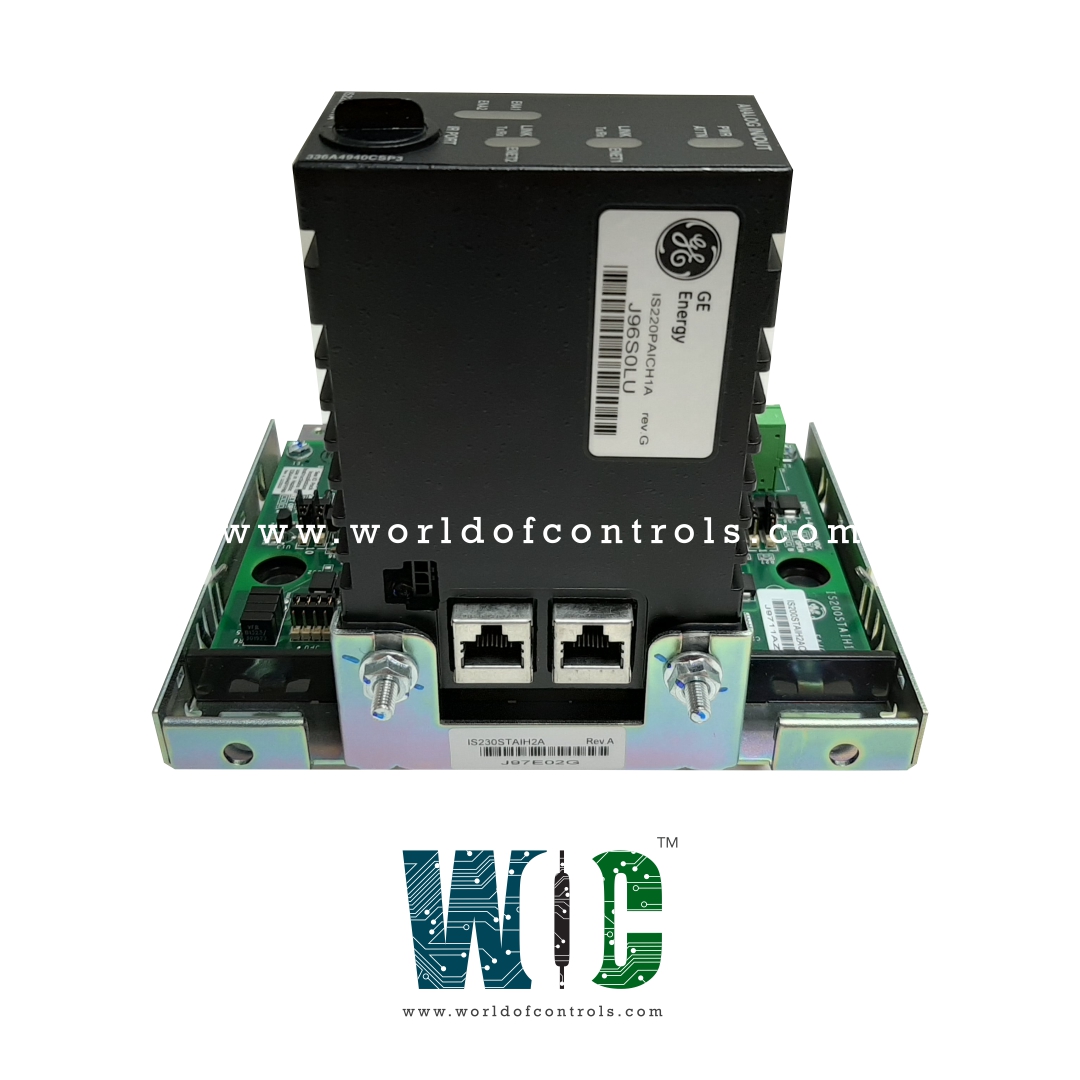
World Of Controls understands the criticality of your requirement and works towards reducing the lead time as much as possible.
IS230STAIH2AA - Compact Analog Input Terminal Board is available in stock which ships the same day.
IS230STAIH2AA - Compact Analog Input Terminal Board comes in UNUSED as well as REBUILT condition.
To avail our best deals for IS230STAIH2AA - Compact Analog Input Terminal Board, contact us and we will get back to you within 24 hours.
SPECIFICATIONS:
Part No: IS230STAIH2AA
Manufacturer: General Electric
Product Type: Compact Analog Input Terminal Board
Series: Mark VIe
Number of Channels: 12
Power to Contacts: 125 V dc
Input Voltage: 120V AC
Output Voltage: 5V to 24V DC
Input span, transmitters: 1 - 5 V dc
Operating Voltage Range: 90V to 265V AC
Maximum lead resistance: 15 Ohm
Communication Protocols: Modbus
Technology: Surface Mount
Operating Temperature: 30°C to 65°C
Weight: 2.00 lbs
Size: 15.9 cm high x 10.2 cm
Country of Origin: USA
Availability: In stock
Manual: GEH-6721D
FUNCTIONAL DESCRIPTION:
IS230STAIH2AA is a Compact Analog Input Terminal Board manufactured and designed by General Electric and is part of the Mark VIe Series used in GE Distributed Turbine Control Systems. The Compact Analog Input Terminal Board provides the electrical interface between one or two I/O Ethernet networks and an analog input terminal board. The STAI contains a BPPX processor board and an acquisition board specific to the analog input function. The I/O pack is capable of handling up to 10 analog inputs, the first eight of which can be configured as +5 V or ±10 V inputs, or 4-20 mA current loop inputs. The last two inputs may be configured as ±1 mA or 4-20 mA current inputs.
The load terminal resistors for current loop inputs are located on the terminal board and voltage is sensed across these resistors by the PAIC. The STAI1 also includes support for two 0-20 mA current loop outputs. The STAI2 includes extra hardware to support 0-200 mA current on the first output. Input to the I/O pack is through dual RJ-45 Ethernet connectors and a three-pin power input. Output is through a DC-37 pin connector that connects directly with the associated terminal board connector. Visual diagnostics are provided through indicator LEDs.
INSTALLATION:
The STAI and a plastic insulator can be mounted on a sheet metal carrier for DIN-rail installation. Alternatively, it can be attached to a sheet metal assembly and bolted directly to a cabinet. Typically #18 AWG wires (shielded twisted pair) are used. I/O cable shield terminal is provided adjacent to the terminal blocks. The following types of analog inputs and outputs can be accommodated:
OPERATION:
In Mark VI systems, the VAIC I/O processor works with STAI. A single cable with a 37-pin D-type connector connects STAI to the VME rack where the VAIC is located. This cable is identical to those used on the larger TBAI terminal board. Two STAI boards can be connected to the VAIC for a total of 20 analog inputs and four analog outputs. 24 V dc power is available on the terminal board for all the transmitters (transducers). Jumpers allow for the choice of current or voltage inputs. One of the two analog output circuits is 4-20 mA, and the other can be jumper configured for 4-20 mA or 0-200 mA. There is only one cable connection, so the terminal board cannot be used for TMR applications as with TBAI.
DIAGNOSTICS:
The board provides the voltage drop across a series resistor to indicate the output current. The I/O processor creates a diagnostic alarm (fault) if any one of the two outputs goes unhealthy. Each cable connector on the terminal board has its ID device that is interrogated by the I/O controller. The ID device is a read-only chip coded with the terminal board serial number, board type, revision number, and the JR, JS, and JT connector location. When this chip is read by the I/O controller and a mismatch is encountered, a hardware incompatibility fault is created.
WOC has the largest stock of OEM Replacement Parts for GE Distributed Control Systems. We can also repair your faulty boards and supply unused and rebuilt boards backed up with a warranty. Our team of experts is available round the clock to support your OEM needs. Our team of experts at WOC is happy to assist you with any of your automation requirements. For pricing and availability on parts and repairs, kindly contact our team by phone or email.
What is a Compact Analog Input Terminal Board?
A Compact Analog Input Terminal Board is a specialized circuit board designed to interface analog input signals with a control system, such as a Programmable Logic Controller (PLC) or Distributed Control System (DCS). It serves as a connection point for analog sensors and transmitters, ensuring efficient signal processing and transmission to the main control unit.
What types of signals does the Compact Analog Input Terminal Board support?
The terminal board typically supports a range of analog signals, including 4-20mA current loops, 0-10V voltage inputs, and thermocouple or RTD signals for temperature measurement. The specific compatibility depends on the board model and its intended application in industrial automation or process control.
What is the typical power requirement for the terminal board?
The power requirements vary by model, but most Compact Analog Input Terminal Boards operate on low-voltage DC power, typically ranging from 12V to 24V. Some models may also draw power directly from the control system or an external power supply unit.